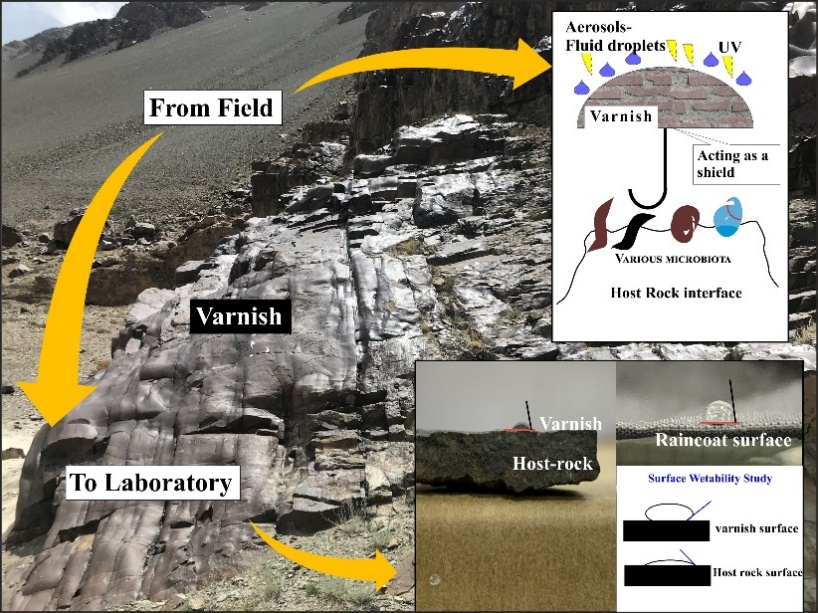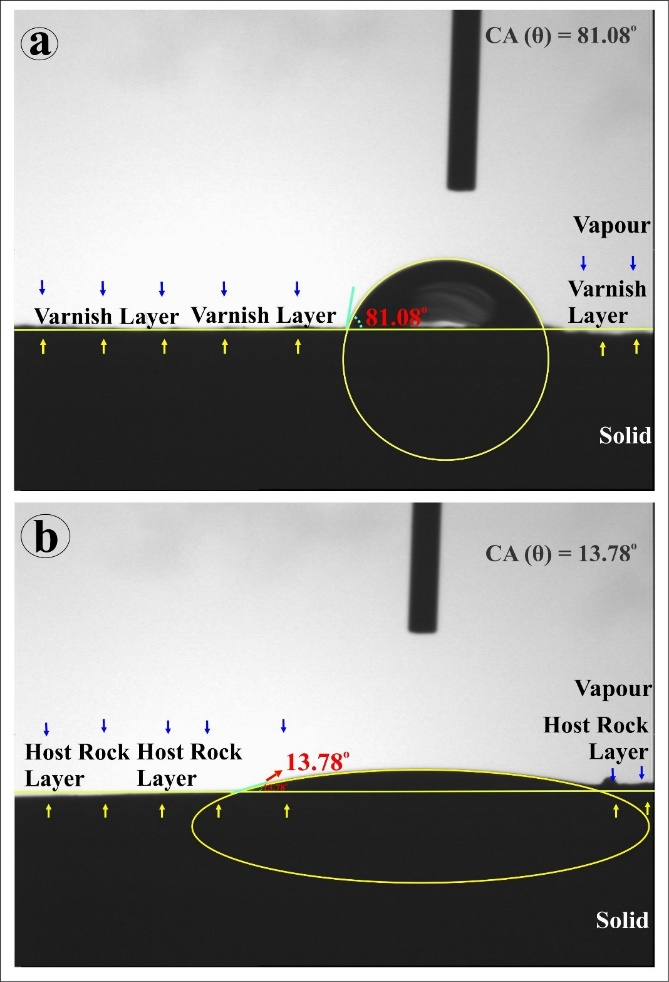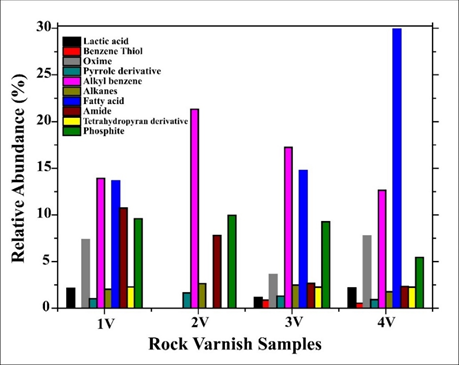Interactions between minerals and microbes present in rocks in arid regions result in a super hero called rock varnish-- an orange-yellow to black coating found on exposed rock surfaces in these areas, according to a study carried out in Ladakh. This super hero from Nature which shields the rocks from further weathering could help in the design of similar bio-inspired products and raw materials for the paint and pigment industries, manufacturing of water-resistant materials as well as natural UV protectors.
The varnish surface of rocks in semiarid places of the world presents an ideal environment for microbial development and a large number of researchers have been trying to decode the mysteries behind such varnish formation.
Intrigued by rock varnishes found on big boulders in cold, arid Ladakh in NW India, researchers from the Birbal Sahni Institute of Palaeosciences, BSIP, an autonomous institute of Department of Science and Technology, chiselled samples out of them for lab analysis to probe into their formation. While on the roller coaster ride of analysis, Dr. Amritpal Singh Chaddha, a PhD student who was part of the study, accidentally dropped a few drops of water on the rock varnish, and observed that the droplets did not spread on the surface but instead adhered to it.
Struck by change in surface wettability characteristics from hydrophilic to hydrophobic in the transition from host rock to varnish, he decided to compare this surface wettability phenomenon observed on the rock samples with a hydrophobic material such as a raincoat. To the team’s surprise, both surfaces displayed a comparable degree of wettability.
To further investigate these observations, complete geochemical fingerprinting with surface wettability analysis was performed. Microbial fingerprinting using organic biomarkers and isotopic analyses in conjunction with electron microscopy revealed the presence of organic metabolites such as fatty acids, alkyl benzenes, oxime, amide, and fatty acids which the scientists interpreted as resulting from mineral–microbial interactions.
The research published in ACS Earth and Space Chemistry sheds light on the intricate relationship between microbial communities, surface characteristics, and organic biomarkers in the formation and stability of rock varnish in extreme environments.
The scientists speculated that the nearly hydrophobic characteristic of the rock-varnish layer creates a niche for microbial life to thrive at the interface between the host rock and varnish layer while providing protection against environmental factors like UV radiation, particle abrasion, and extreme temperature fluctuations. This hydrophobic feature of the varnish layer may contribute to its longevity, as evidenced by the preservation of petroglyphs discovered worldwide over thousands of years. The team thus concluded that Mn and Fe, along with surface hydrophobicity, play an important role in shielding the inner biotic entities in extreme conditions.
Introducing the concept that surface chemistry and hydrophobicity could play a crucial role in facilitating microbial processes related to varnish formation, a perspective not extensively explored before, the study paves new avenues in the field of bioinspired materials, as rock varnish possesses characteristics that make it a unique geomaterial.
The study was lead by Dr. Anupam Sharma and Dr. Amritpal Singh Chaddha.
Link to publication: 10.1021/acsearthspacechem.3c00071.

Fig.1 Graphical abstract depecting the current research study

Fig.2 The sessile drop method vividly demonstrates the hydrophobic character of the varnish surface, highlighting its contrast with the hydrophilic nature of the host rock surface.

Fig.3 The δ13C values of rock varnish layer in rock varnish sampled at four different sites in Leh-Ladakh (~ 3000-3600 m a.s.l) (in black square, current study) and its comparison with the available isotopic data of varnish from Western North America, Israel, and the Sinai Peninsula from (Dorn and DeNiro, 1985)47. Negative δ 13C values represent depletion. The values in the pink inverted triangle indicate values from different elevations at Kitt Peak, Arizona (3,4,6, and 9) and from various places in the central Mojave Desert, California (1,2,5,7, and 8).

Fig.4 Relative abundance of different type of organic compounds detected in the varnish samples 1V, 2V, 3V, and 4V, respectively. Note that fatty acids, alkyl benzene, and phosphite exhibit relatively higher abundance compared to other compounds






























